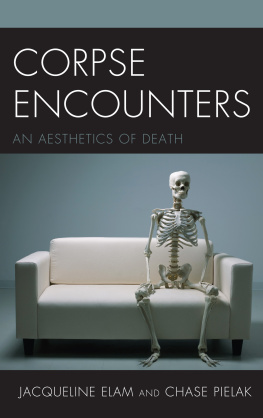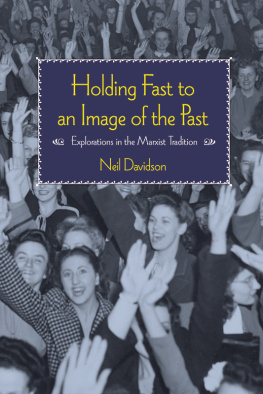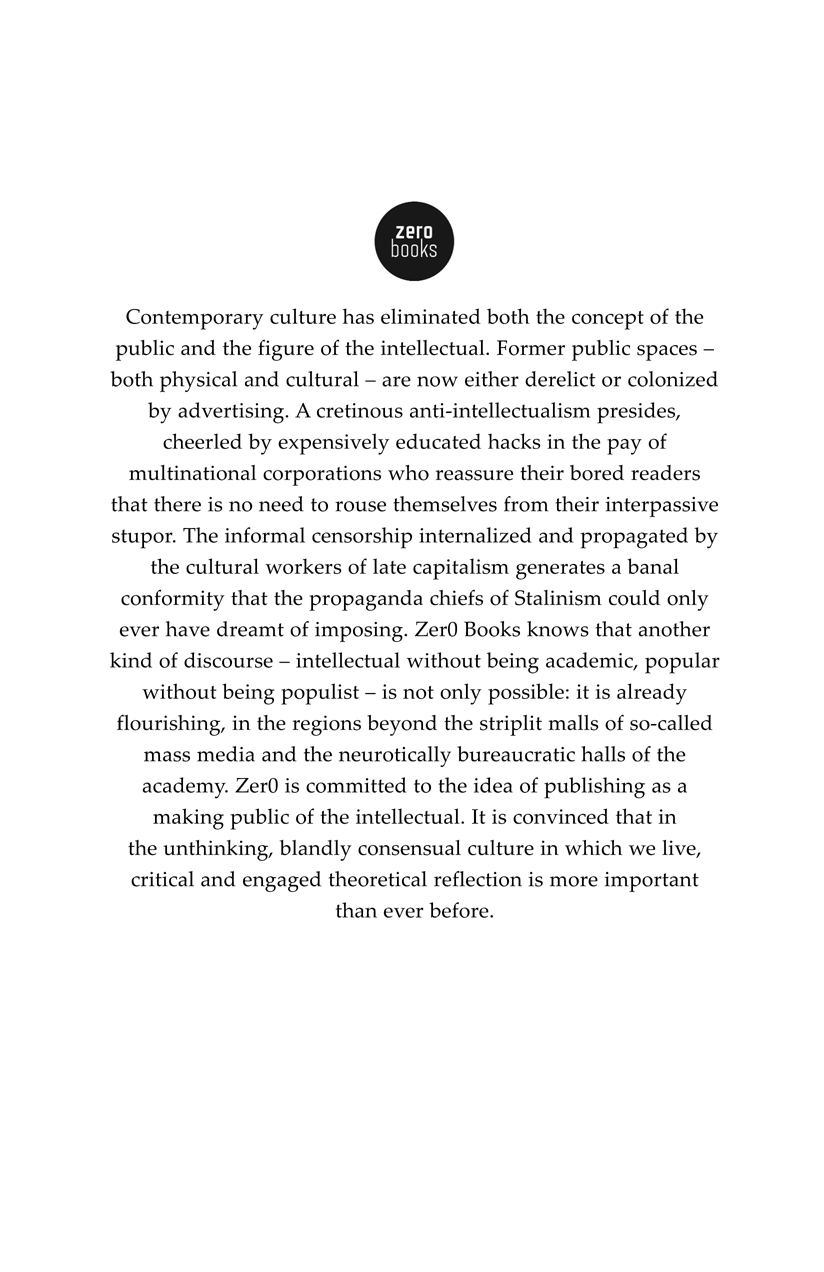Acknowledgments
These ideas were evolved and elaborated in a disciplined way on a series of seminars (known as the Ideology Course) which I took part in as a student at Portsmouth Polytechnic Fine Art Department 1979-82 and which were led by the systematic artist and Marxist Jeffrey Steele (a founder member of the Systems Group). I was invited to contribute a short appendix to the course papers, from which the current work stems. Portsmouth was a great art college.
Thanks go, in different ways and for a variety of reasons not necessarily known to those I mention, to Iona Singh, Paul Tedman; to Frank Rosenberg, Andrew Reed, Mary Smith, Rosemary Hughes, and all those who contributed to the above-mentioned seminar; Jeffrey Steele, Michael Parsons, Adrian Rifkin, Morris Dennis, Jane Becket, and all staff, lecturers and visiting lecturers at Portsmouth; Guy Driscoll, Hengstenberg; affiliates of the Marxist Study Group, Portsmouth (1981-84); the artists Adrian Heath, Peter Lowe and Norman Dilworth; the members and contributors to Group Proceedings artists association; including Trevor Clarke, Malcolm Hughes and Jean Spencer; Laurence Gane, Christopher Frayling, Penny Sparke, Bernard Harrison, Paul Overy and fellow students and contributors to the Cultural History research program at the RCA at that time; Bernard Harrison. Greg Condry, and Peter Holmes, of the University of North London Humanities IT department, and especially the students on the Electronic Publishing and Hypertext & Hypermedia courses; David Ruccio, Jack Amariglio, Jonothan Diskin, Jacqueline Southern, Marian Aguiar, Eric Glynn, Kenan Erel, and all associated with the journal Rethinking Marxism; and all those who I met and discussed with at the Politics and Languages of Contemporary Marxism conference, UMASS December 1996, including Etienne Balibar, Warren Montag; Anne Senghas; staff, students and colleagues at the faculty of Design and Art at the Free University of Bozen-Bolzano, especially Karin Apollonia Mueller and Kuno Prey; and the Editors and staff at Political Affairs journal (NY), Joe Sims and Joel Wendland.
GT
Chapter 1
Introduction
1.1 General
In academic art history there is a course that is traditionally meant for beginners called the survey. The survey includes a rough overview of the better known artists and the art they produced during the period in question, with a sketch of the historical context and a few events described.
This is useful, no doubt. But lets compare this to the same situation in the sciences, biology for instance. The equivalent might be an outline of the history of scientific theories and discoveries in biology leading up to Darwins theory of evolution and genetics in the present day.
Note the difference. With art as the subject we get mainly a descriptive rendition of successive styles that appear in the artworks, and perhaps a descriptive sketch of social context. If we did the same for biological science, it would be akin to providing only a description of the appearance of a series of plants and animals, their characteristics and habitats, and thats it. It is not necessary to say that the latter would be totally unacceptable in biology.
Art is different, obviously. The subject matter of art history is not considered science and so the rules are not the same.
This division into two broad categories, art and science, is called the bifurcation thesis. This thesis will be remarked upon later in this book in more detail, but here this serves to show up a serious obstacle in the way of understanding art which has been decided upon already, before we begin, from outside art and at the level of policy.
This policy is very effective. Although there are well known critical terms like culture industry which perhaps match similar terms like the military industrial complex and show the governmental-corporatist nature of art, we still tend to accept the notion of art as somehow outside the state and as more organic, friendly, human, if perhaps sometimes also frivolous.
Perhaps due to this, even many Marxist accounts of art tend to ignore or overlook the role of the state, and education, in and on art, and often concentrate their description of art on the grass-roots, as if art always was a question of spontaneity and organic production. In other words they tend to leave behind Marxian analysis of the production relations of art, and along with this therefore also aesthetics and art history, criticism, theory, and so on, and end in another, perhaps more rigorous and partisan but nevertheless, still only descriptive theory of art.
This descriptive theory by default refers to the content of art, because this makes the description far easier. A story of art can be made, reading the visual works as if they each added up to an overarching narrative in the Hegelian fashion. Questions of form, quality and technique only complicate this process, and tend to be sidelined.
Academically, therefore, art history tends toward the worst ideology of history, and the worst form of historiography. It tends towards that of history as if it were guided by Kings, Queens, and Important People, including, in this case Great Artists.
From this position it is still possible to conjure up a radical art history which substitutes the Kings and Queens with class struggle and human spirit as if it were embodied in and by this struggle, yet with artists depicting the essence of this struggle in a tendentious way in their narrative content.
But see how in this way the circle is closed and there is no room for any other alternatives. Marx and Marxism in fact becomes just another actor in this descriptive story, a story of spirits separated from the production relations that underlie these spirits, shape them and alienate them, albeit spirits with the relevant Marxist language, concept terms and postures.
1.2 Sources
This thesis goes against this paradigm, by introducing and using the concept of the aesthetic level of practice. This concept, I suggest, enables us to include and understand the role of form, style, quality and technique in aesthetic mediations as an historical agency in history and class struggle, and it grounds the role of art and renders artistic phenomena socially accountable.
There are some main sources for this which it will be useful for the reader to know, now, and which can be divided into two sections:
- (a) Marxs 1844 Manuscripts, and the concept of alienation and sensual feelings (b) Althussers theory of ideology and reproduction, and (c) Benjamins theory of the artist as a producer (within production relations).
- (a) Freuds theory of the drives, (b) Ewald Herings Darwinian dialectical theory of physiology, and (c) Marxs 1844 Manuscripts.
Marxs Manuscripts appears twice because (like many have already suggested) it acts as the theoretical bridge between Freud, and the individual-psychological, and Marx and the social subject.
To support this theory, and to provide it with legitimacy in Marxism, I found it necessary to provide a new version of Marxs 1844 Manuscripts that followed the original document and which disclosed (by using web style hypertext) its radical design. It was as a student that I first read this text and became fascinated by the references in the notes to its original strange pagination and layout. Trying to decipher the meaning of this documents design in relation to the subject matter was in fact one of the main inspirations for embarking on the research that has led to this book.










